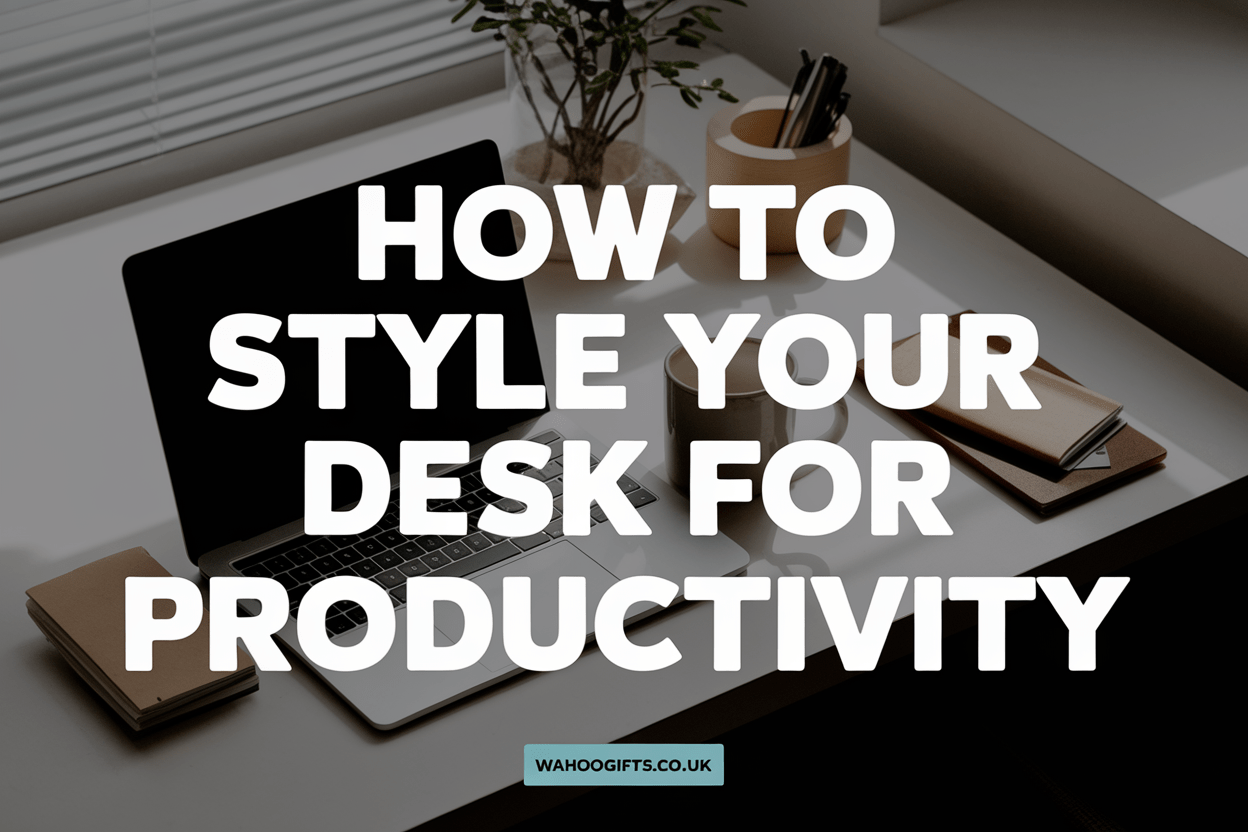
How to Style Your Desk for Productivity Comfort: Top Tips for Success
How to Style Your Desk for Productivity & Comfort
Let’s be honest — we’ve all sat at our desks wondering why our brains refuse to cooperate. You’ve got the coffee, your to-do list is ready, but somehow… nothing happens. Sound familiar? Don’t worry, you’re not broken — your desk setup probably is.
Creating a workspace that actually helps you think (and doesn’t make your back hate you) isn’t rocket science. It’s about combining style, comfort, and functionality so your brain and body can finally work together instead of plotting your downfall.
So grab your coffee (or tea, no judgment here) and let’s talk about how to style your desk for productivity and comfort — without turning your space into a Pinterest board gone wrong.
Key Takeaways
-
A clean and organized desk minimizes distractions and boosts focus, creating a truly productive workspace.
-
Ergonomic furniture and proper lighting are essential for comfort, helping to reduce physical strain and eye fatigue.
-
Personalizing your desk with a few meaningful items and plants promotes a welcoming environment that supports both creativity and well-being.
1. Start with a Clean Slate (Literally)
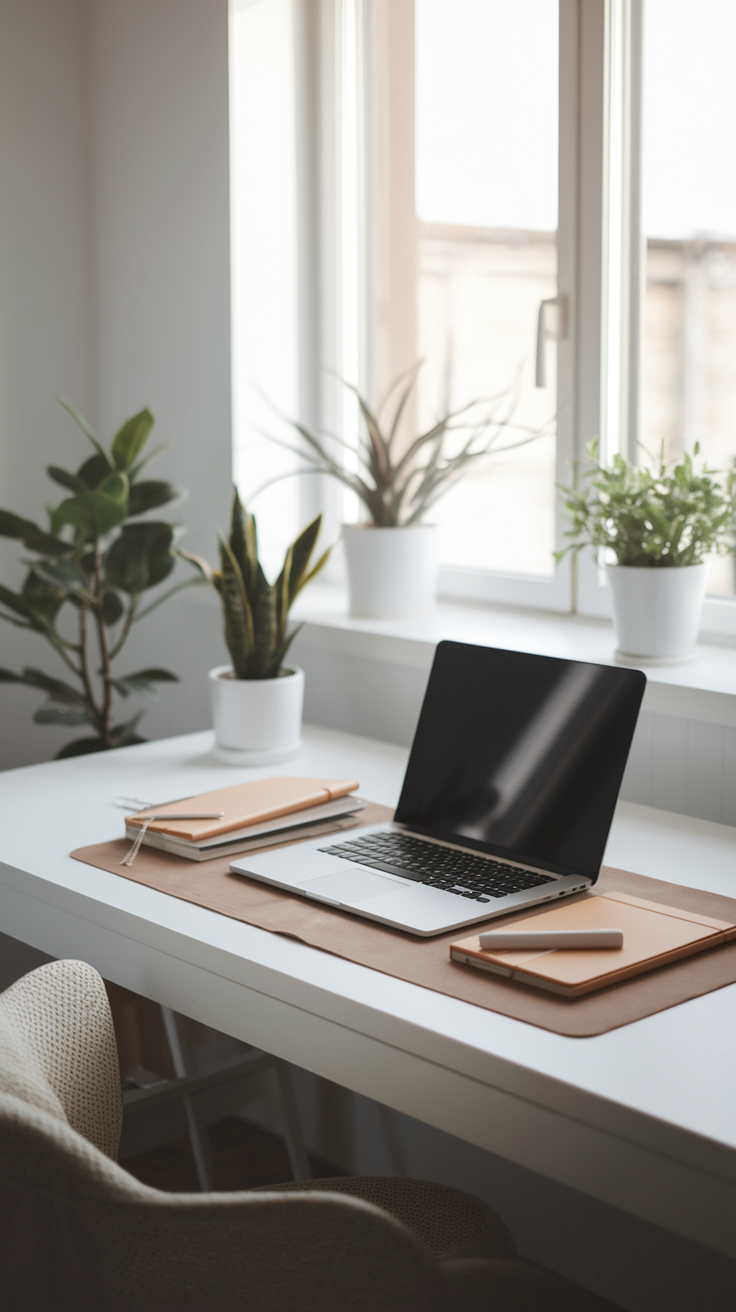
Clutter kills focus. I know, I know — you need that third pen and the half-dead succulent. But trust me, your brain works better in a tidy space.
Start by clearing everything off your desk. Then, only bring back what actually earns its spot. Focus on keeping only essential items within reach to maintain a minimalist and efficient workspace. This approach not only keeps your desk clear but also helps in reducing distractions, allowing you to concentrate better. Ask yourself: Do I use this daily, or does it just look busy? If it’s the latter, it’s time for a one-way trip to the drawer of forgotten things. A well organized desk supports productivity and helps you stay focused throughout the day.
Quick Desk Declutter Tips:
-
Keep only essentials: Laptop, notebook, pen, maybe a coffee mug.
-
Hide cables: Use clips or a simple cable organizer. Tangled cords = tangled thoughts.
-
Adopt the “one decorative item” rule: A small plant, framed photo, or minimal sculpture adds personality without distraction.
A clean desk equals a clean mind. Well… mostly. I can’t help with your existential dread, sorry.
2. Choose the Right Desk Setup for You
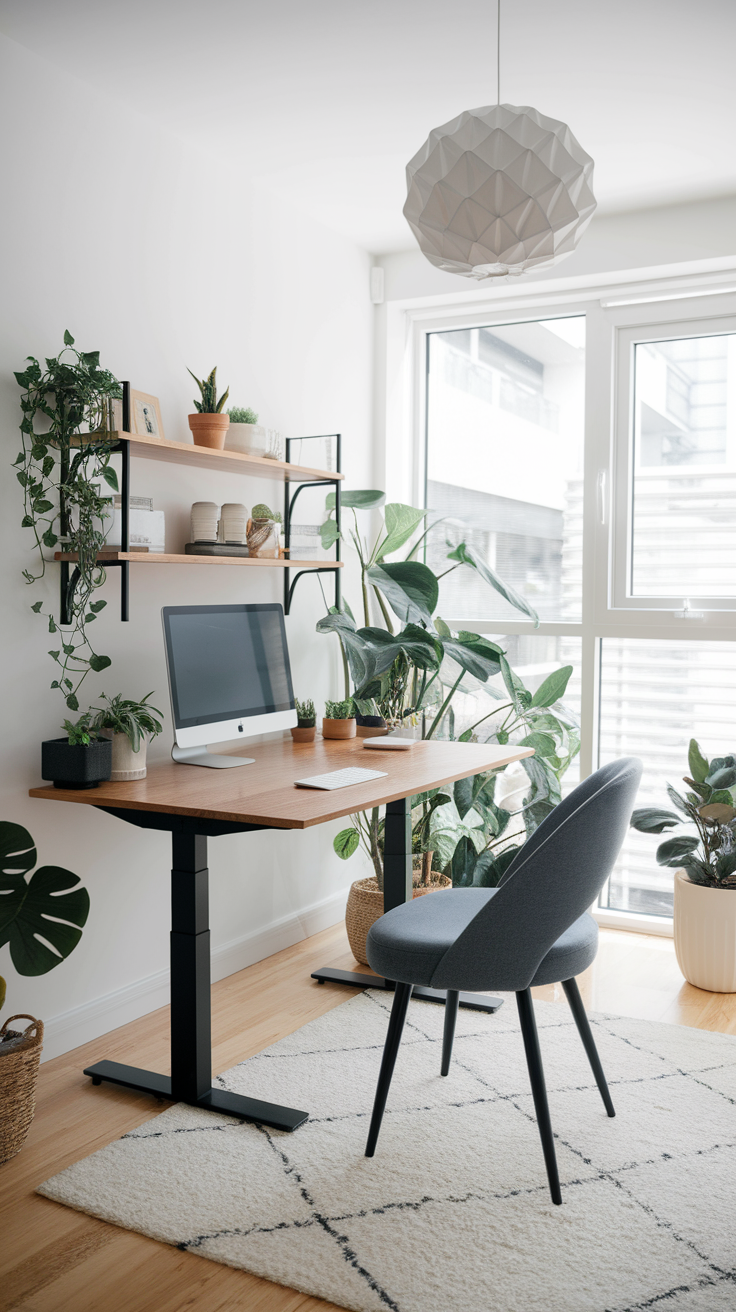
Not all desks are created equal. Some scream “corporate chic,” others whisper “college dorm from 2008.” Whether you're working in a corporate office or setting up at home, these tips apply to help you create your ideal workspace.
Your desk should match how you work, not just how you want it to look on Instagram. When designing your office space, focus on creating a functional space that supports your daily tasks and productivity.
Looking for more inspiration? Check out these home office ideas to discover different desk setups that can boost your workflow.
Standing vs. Sitting Desk
Ever tried a standing desk? IMO, it’s life-changing. You can stretch, move, and feel like a semi-functional adult. Standing desks also help mitigate the negative effects of prolonged sitting, which can impact your health and productivity.
But standing all day isn’t realistic either. So, balance it out:
-
Standing Desk: Great for energy and posture. Incorporating movement throughout your day with a standing desk supports overall well being and helps reduce physical strain.
-
Sitting Desk: Cozy, classic, and perfect for long creative sessions.
-
Hybrid Setup: Adjustable desks give you the best of both worlds and encourage incorporating movement, which benefits your overall well-being.
Choosing the right desk setup can support your well being during long work hours.
Desk Size and Shape
Think about your workflow:
-
Small Desk: Ideal for minimalists (or people who can’t handle clutter without panicking), and perfect for maximizing functionality in smaller spaces.
-
L-Shaped Desk: Perfect if you multitask or like separate zones for “focus” and “chaos.”
-
Deep Desk: Great for multiple monitors or creative setups like sketching or crafting.
Try experimenting with different arrangements of your desk and workspace elements to find what best supports your workflow and comfort.
Pro tip: Don’t push your desk directly against the wall if you can help it. A little space behind it adds depth — and let’s be real, it feels way less like you’re in a cubicle prison. Making the most of your available spaces can boost both productivity and comfort.
3. Your Chair: The Throne of Productivity
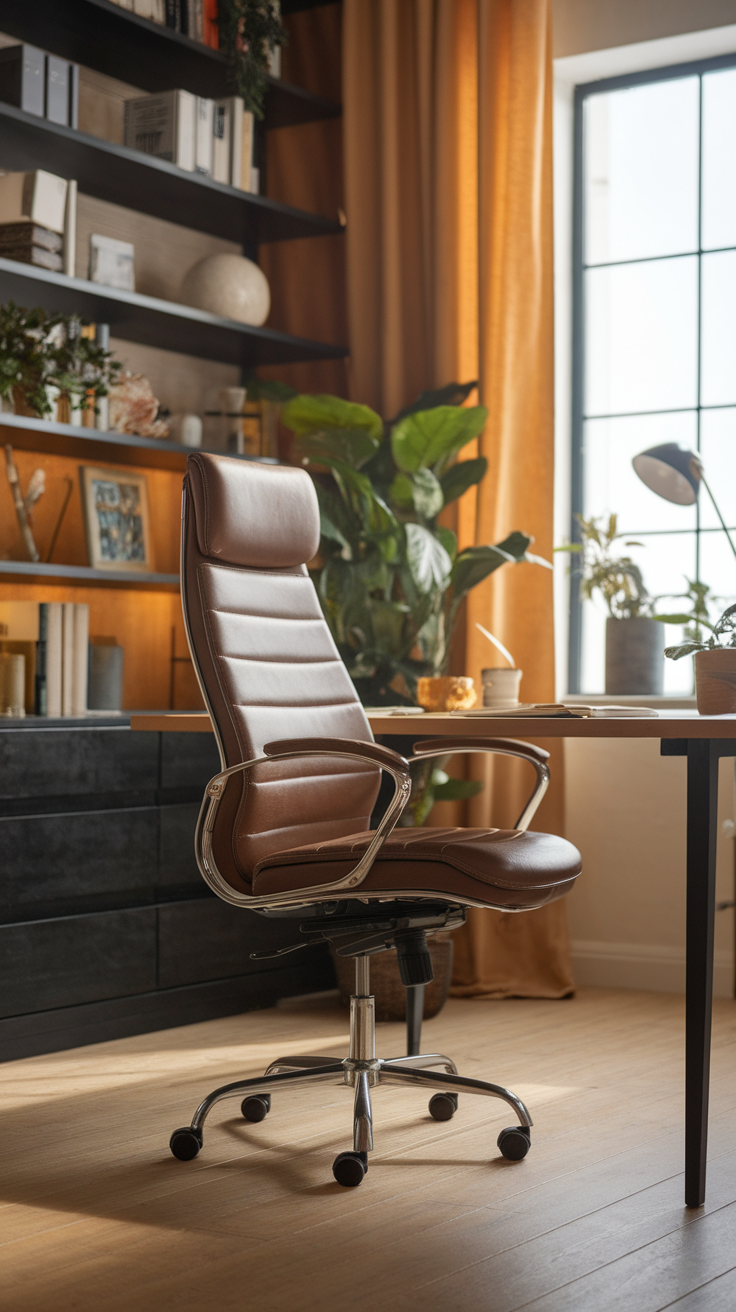
Let’s talk about the one thing most people cheap out on — the chair. Big mistake. HUGE.
If you’re sitting for hours, your chair should feel like a supportive hug, not a medieval torture device. Investing in a comfortable chair is essential for creating a productive and inviting workspace.
What to Look for in a Good Office Chair:
-
Ergonomic Design: Supports your spine and encourages good posture.
-
Adjustability: Seat height, armrests, and tilt tension should all move with you.
-
Breathable Material: Leather looks cool but can get sweaty. Mesh = happy back.
-
Lumbar Support: Non-negotiable. Your lower back will thank you later.
If a fancy ergonomic chair isn’t in your budget, add a lumbar cushion or even a rolled-up towel. Your spine doesn’t care if it’s designer.
4. Lighting: Because Squinting Isn’t Productive
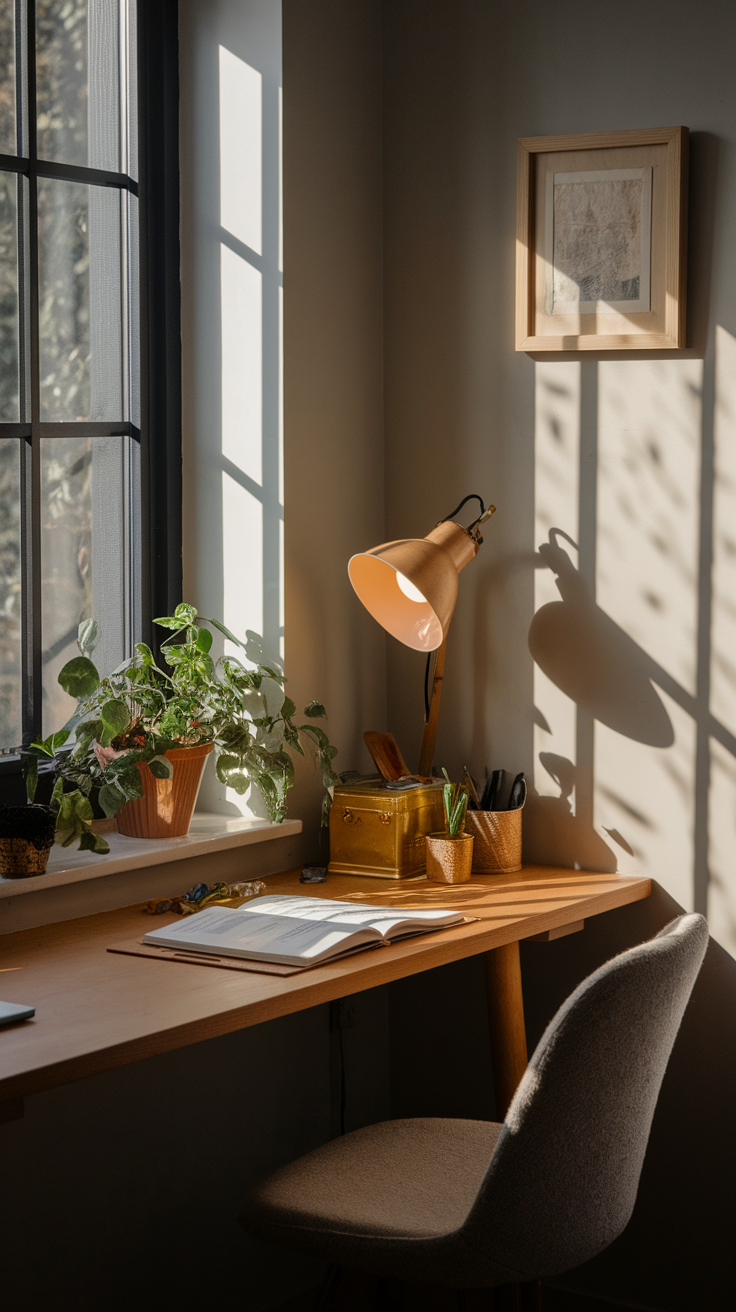
Bad lighting is the silent killer of motivation. Ever notice how hard it is to work when everything feels dim and gloomy? Yeah, that’s your brain quietly protesting. Proper lighting is essential for productivity and comfort, helping you stay focused and energized throughout the day.
-
Natural Light: Whenever possible, position your workspace close to a window to soak up natural sunlight.
-
Natural sunlight boosts productivity, alertness, and overall well-being, and it’s free.
-
Task Lighting: For evening hours or rooms without much daylight, desk lamps are a must. Choose desk lamps that provide good lighting to reduce eye strain and keep your workspace bright and inviting.
Here are a few tips for optimizing your lighting: position your desk to maximize natural sunlight, use adjustable desk lamps for targeted illumination, and avoid harsh overhead lights that cause glare.
Even small changes to your lighting setup can make a significant difference in your workspace comfort and productivity.
Warm lighting makes you feel cozy, while cool lighting keeps you alert. Mix them strategically. You want “productive glow,” not “interrogation room vibes.”
5. Personalize Without the Chaos
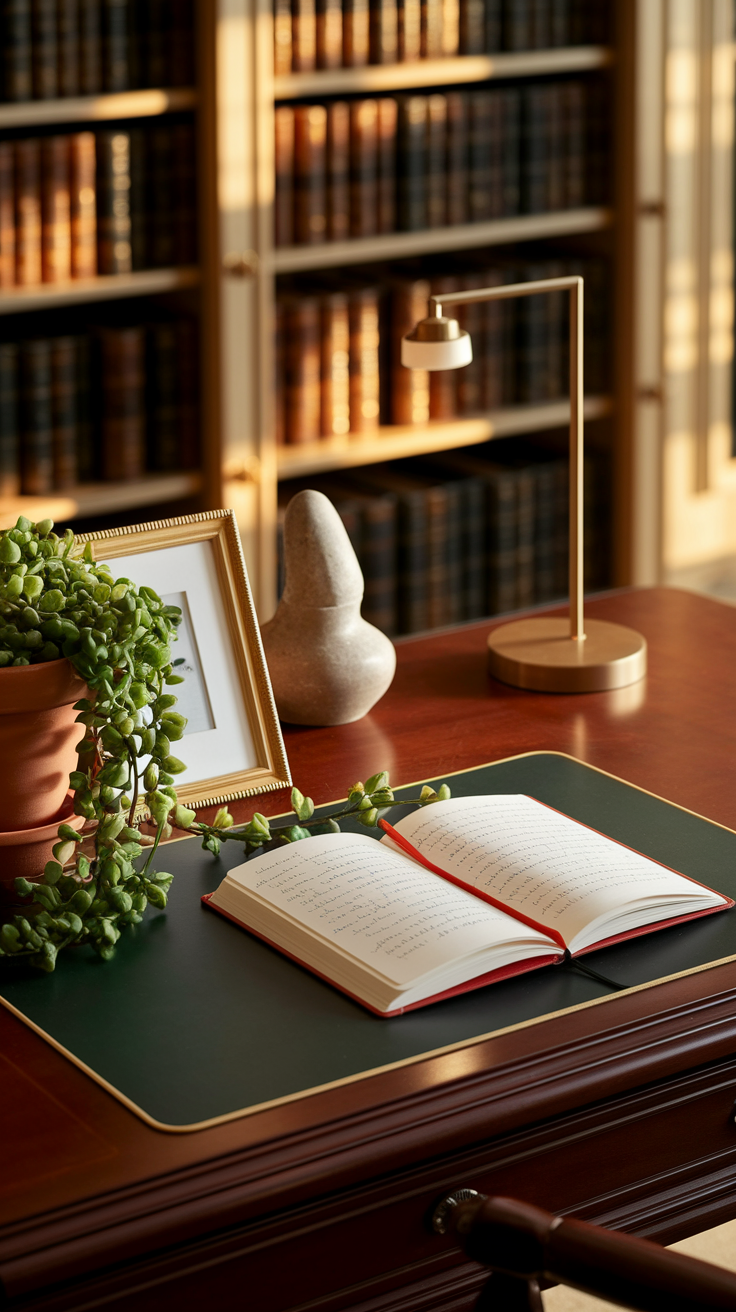
Your workspace should feel like you — not like a sterile corporate dungeon. Adding personal touches, such as photos, artwork, or unique desk accessories, can make your desk feel welcoming and individualized without creating clutter. But personalization can go from stylish to chaotic real fast.
Add Personality Wisely:
-
Plants: Instant mood-lifters. Low-maintenance ones like succulents or snake plants are perfect.
-
Artwork or Photos: Stick to 1–2 pieces you genuinely love.
-
Color Scheme: Choose tones that calm you — blues, greens, and neutrals promote focus.
Want to get fancy? Try a mood board above your desk. Pin photos, quotes, or goals that inspire you. Just don’t turn it into a collage explosion, okay?
6. Organize Like a Pro (Without Going Full OCD)
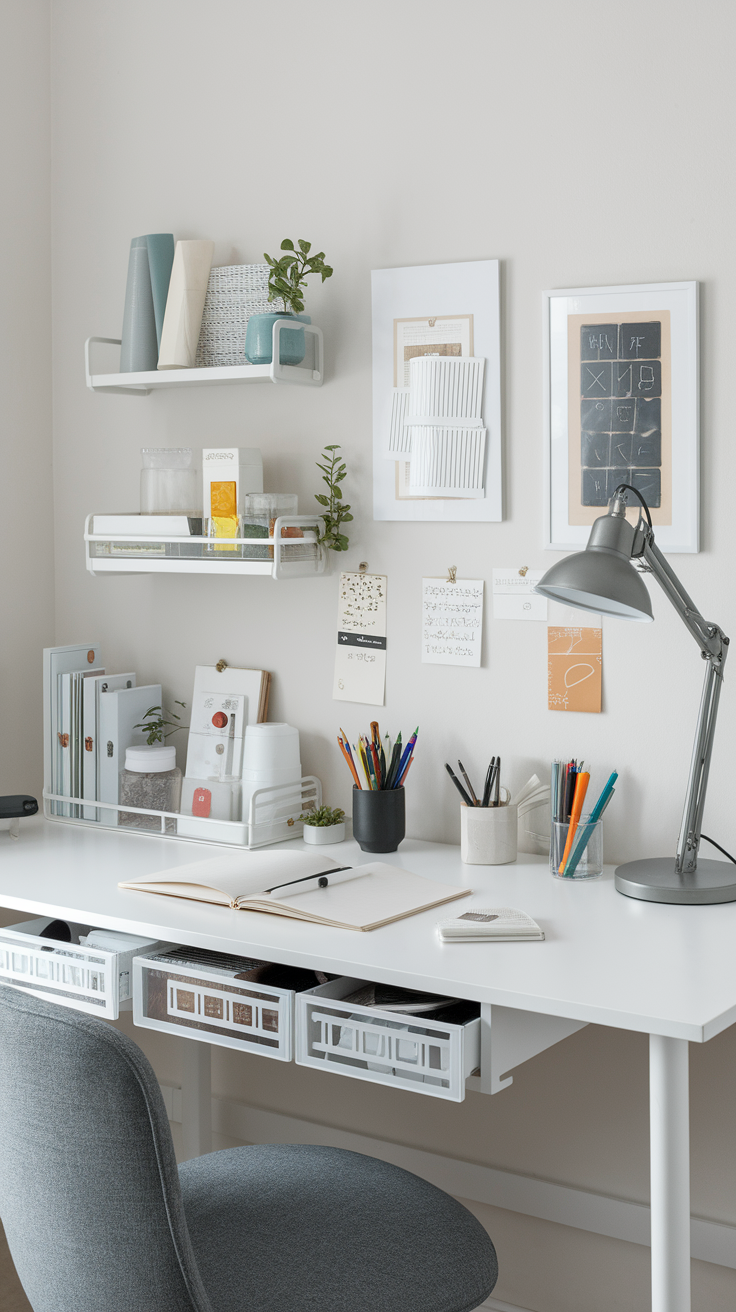
Good organization isn’t about perfection — it’s about not losing your sanity when you need a pen. An organized workspace not only boosts productivity but also creates a professional and welcoming environment that leaves a positive impression.
-
Use trays, bins, or drawers to keep supplies sorted and out of sight.
-
Desk organizers are essential for keeping pens, paper, and other small items neatly arranged and easily accessible, helping maintain a tidy workspace.
-
Built in storage is a smart solution for maximizing organization and functionality, especially in small or multi-purpose home office spaces.
-
Label everything so you can find it later.
-
Tame cables with a cable management box or a cable management tray to keep cords out of sight and prevent tangles.
Small organizational changes can make a big difference—or even all the difference—in your productivity and work experience.
Smart Desk Organization Ideas:
-
Drawer Dividers: Stop playing Jenga with your stationery.
-
Desktop Trays: Keep essentials within arm’s reach but not scattered.
-
Floating Shelves: Store books or décor without taking up desk space.
-
Cable Management Boxes: Out of sight, out of mind (and less of a fire hazard).
Ever notice how a clean desk suddenly makes you want to work? It’s weirdly satisfying — like the grown-up version of cleaning your room for “that fresh start” vibe.
7. Ergonomics: The Secret Sauce of Comfort
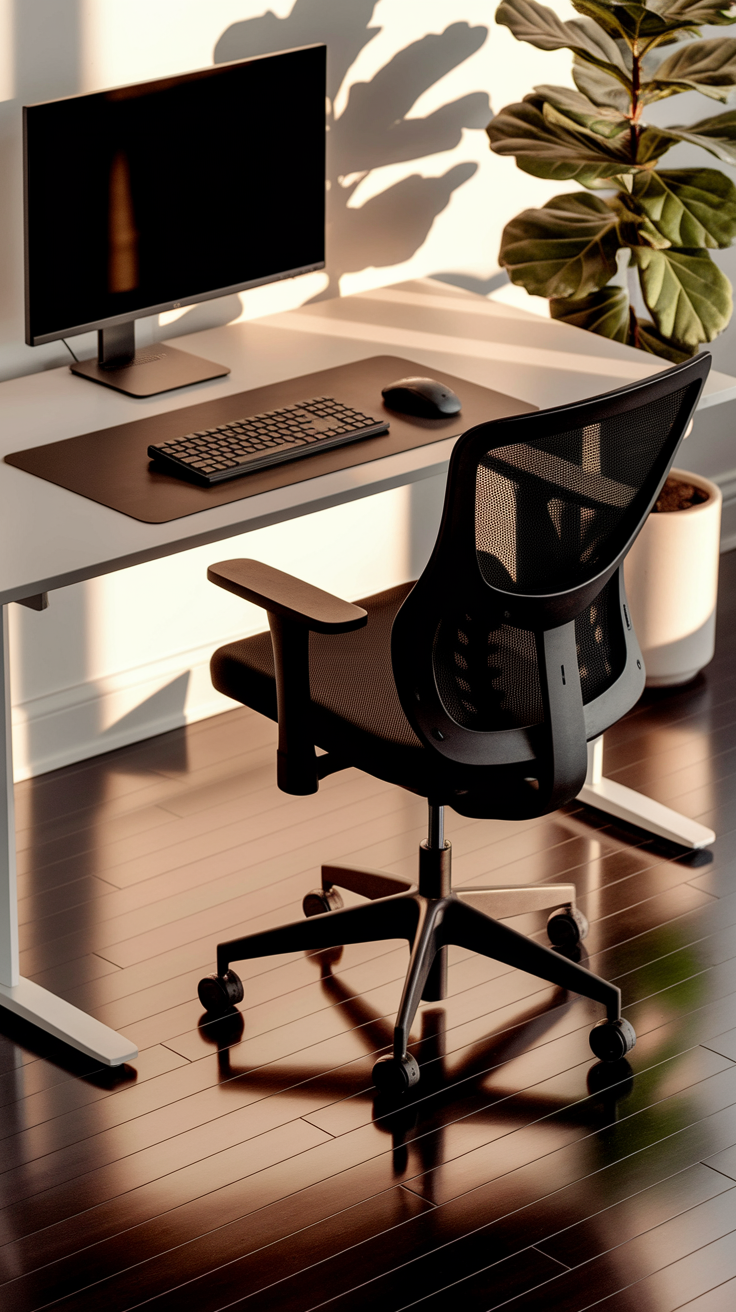
Productivity isn’t about working more — it’s about working comfortably. Ergonomics is just a fancy word for “how not to wreck your body while working.”
-
Keyboard position: Keep your keyboard at elbow height and close to your body. Using an ergonomic keyboard can help support proper posture and reduce repetitive strain injuries, making long hours of work more comfortable.
Key Ergonomic Tips:
-
Screen Height: The top of your monitor should be at eye level. No hunching allowed.
-
Keyboard Position: Keep your wrists straight and your elbows at 90 degrees.
-
Foot Support: Your feet should rest flat. Use a footrest if you’re short (same, no shame).
-
Breaks Matter: Stand, stretch, or just stare into the void every hour. Your body needs it.
Ever tried working when your back hurts? Exactly. Comfort first, productivity second — because one fuels the other.
8. Tech Upgrades That Actually Help
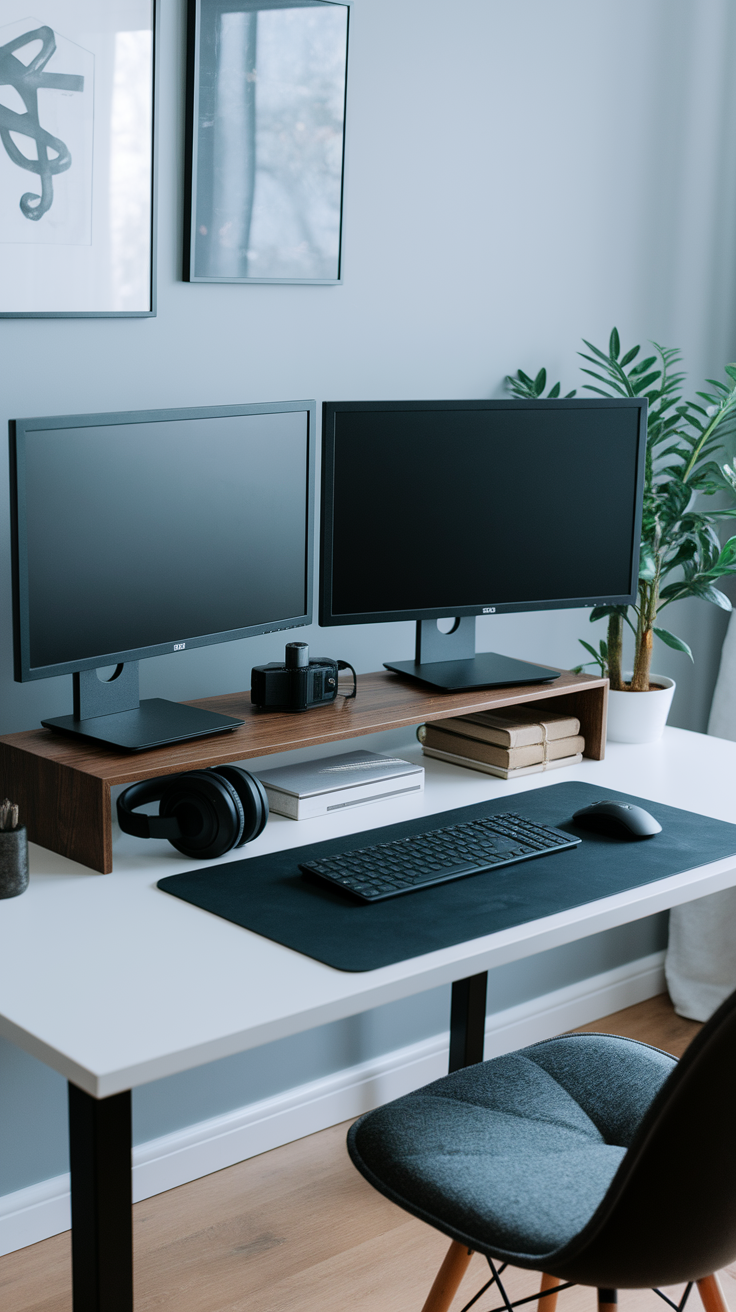
Let’s face it — sometimes gadgets make us feel more productive just because they look cool. But a few tech upgrades can genuinely make a difference. The right tech can boost productivity and enhance productivity by streamlining your workflow and helping you stay organized.
Worthwhile Desk Tech:
-
Monitor Stand: Raises your screen and frees up space underneath.
-
Wireless Keyboard & Mouse: Goodbye tangled cords.
-
Noise-Canceling Headphones: Perfect for focus sessions (or ignoring life in general).
-
Desk Pad: Adds style, comfort, and a touch of “I have my life together.”
Pro tip: Don’t overload your setup. More gadgets = more distractions. Pick what truly improves your workflow.
9. Scents, Sounds, and Sips: The Small Things That Matter
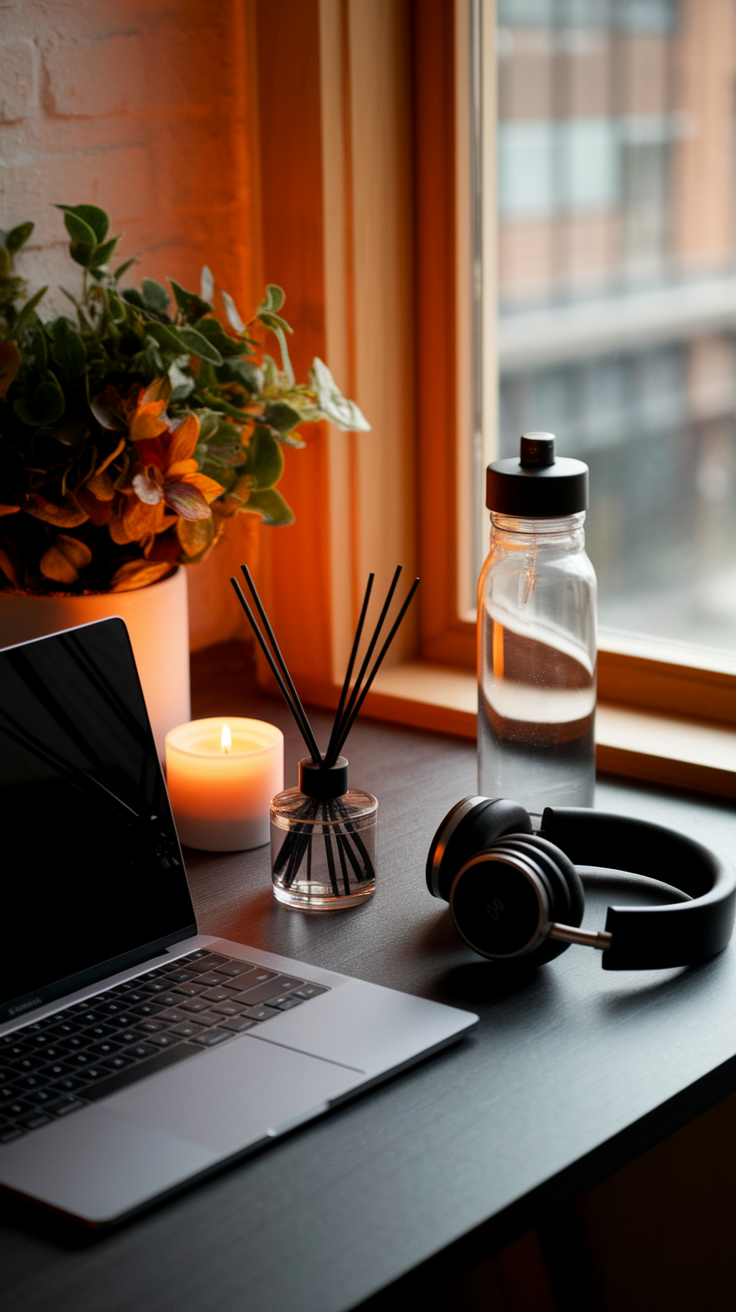
You’d be surprised how much your senses affect your productivity.
Scent
A pleasant scent can boost your mood and help you focus. Try a subtle candle or diffuser with essential oils like lavender, peppermint, or citrus. These small touches can make your workspace more inviting and contribute to less stress during the workday. Just keep it light — your desk shouldn’t smell like a spa exploded.
Sound
Some people work best in silence, while others need a bit of background noise to focus and create a productive environment. Try playing instrumental music, white noise, chill lofi beats, or nature sounds. If you’re in a noisy environment, noise-canceling headphones can help. Personally, I love the soft hum of a coffee shop playlist — it tricks my brain into thinking I’m being social. Experiment to find what works best for you.
Hydration
Don’t forget to drink water! Dehydration can sap your energy and concentration. Keep a water bottle at your desk and take regular sips throughout the day. You’d be shocked how often “I’m tired” actually means “I’m dehydrated.”
10. The Routine That Brings It All Together
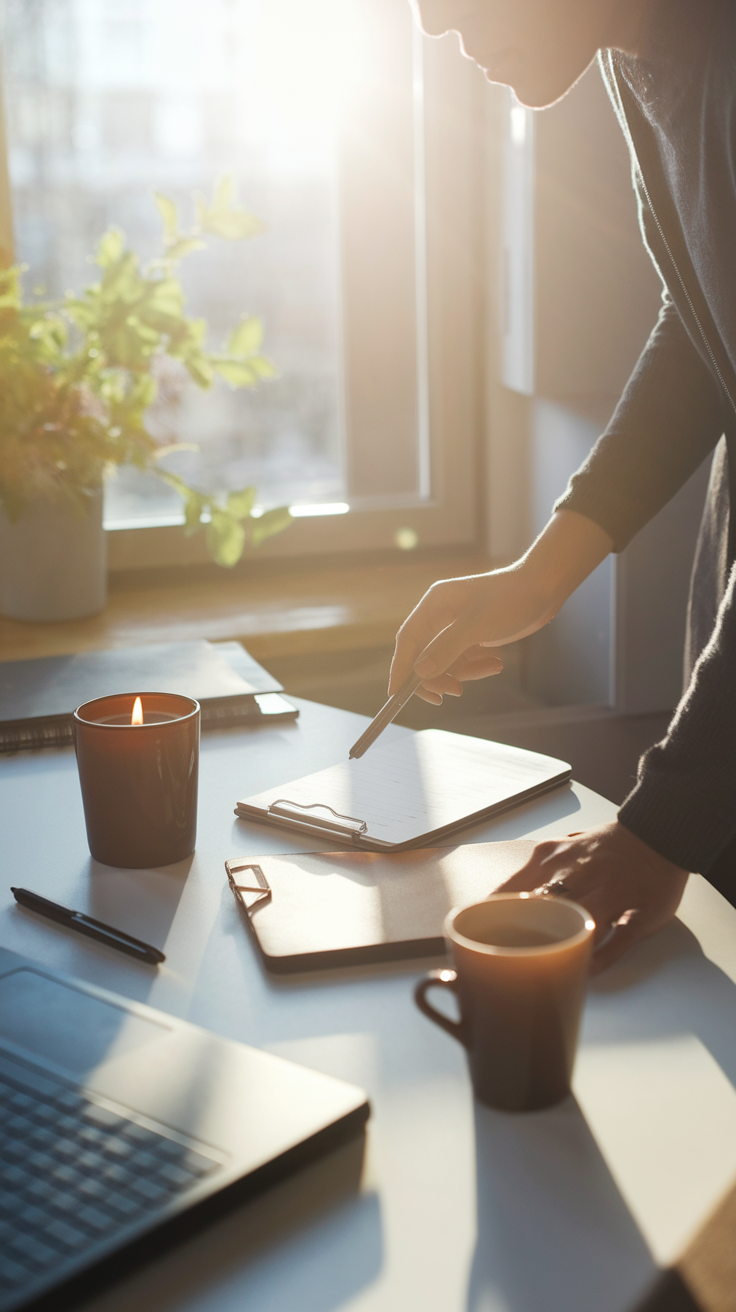
You can style your desk like a magazine spread, but if you don’t use it with intention, it’s just décor. Routines also help establish clear boundaries between work and personal time, making it easier to protect your mental well-being.
Create a mini ritual to start and end your workday:
-
Morning: Light your candle, play your focus playlist, and review your top 3 priorities to help you stay focused throughout the day.
-
Midday: Take a quick stretch or 5-minute “stare at nothing” break.
-
Evening: Clear your desk and jot down tomorrow’s to-dos.
It’s simple, but it tells your brain, “We’re working now” and later, “We’re done.” And that mental switch? Game changer.
11. Common Desk Styling Mistakes (That Kill Productivity)
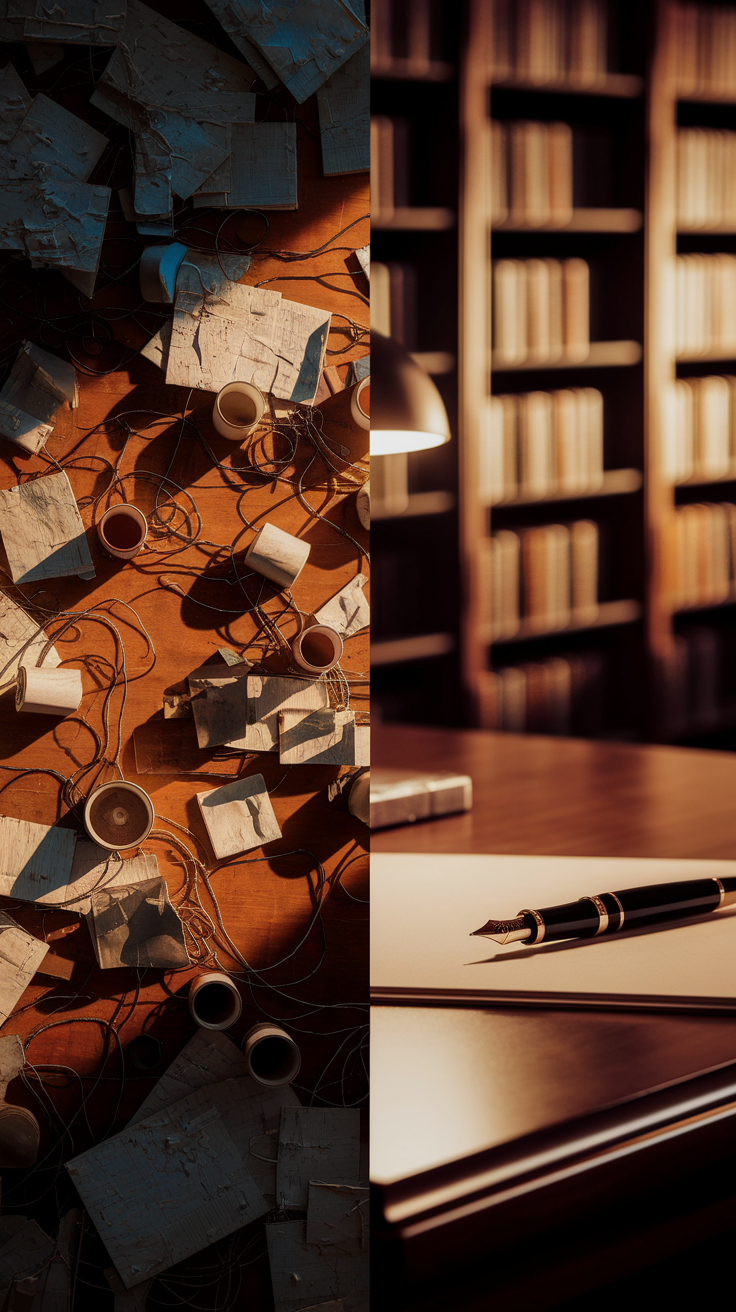
Let’s call out the obvious offenders:
-
Too many decorations: Cute, but distracting.
-
Bad lighting: Instant motivation killer.
-
Ignoring ergonomics: Enjoy your chiropractor bills.
-
Messy cables: Visually chaotic, mentally draining.
-
Overcomplicating your setup: More gear ≠ more focus. Keep your desk surface clear and functional to avoid clutter and distractions.
Less really is more when it comes to productive desk setups.
Final Thoughts: Your Desk, Your Zone
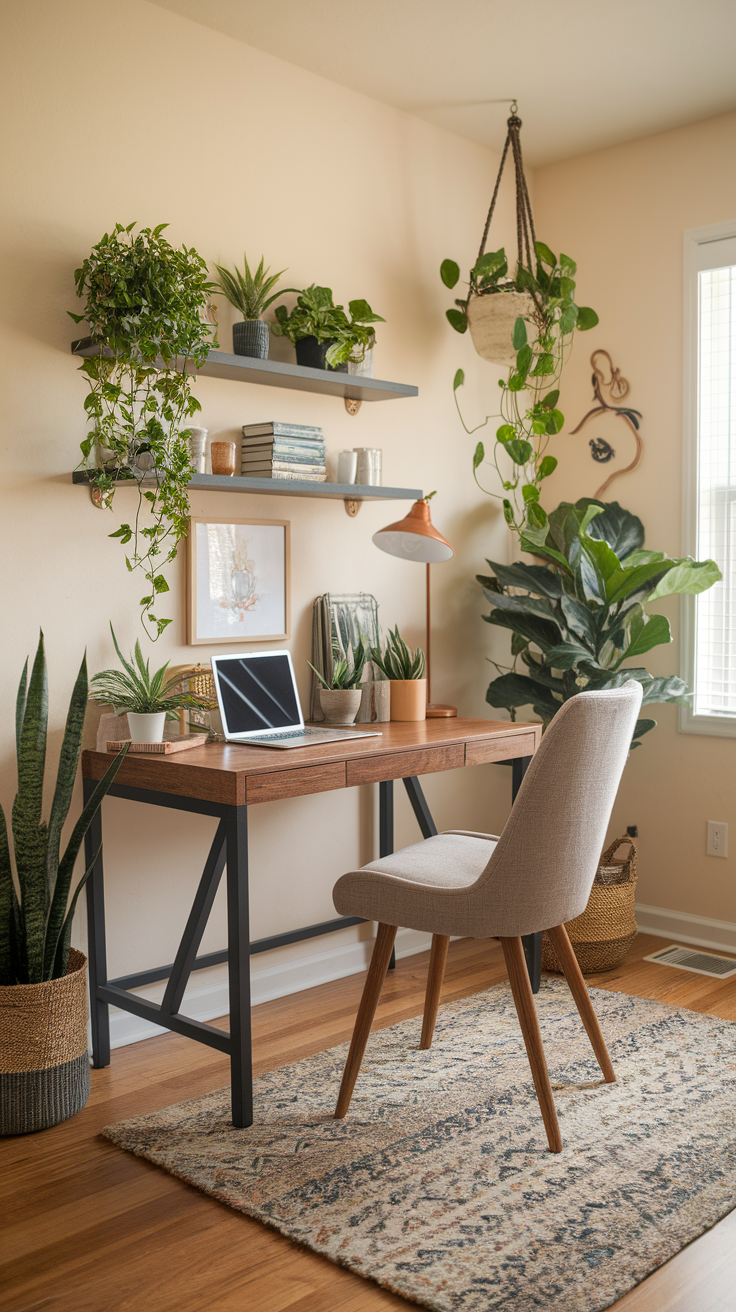
At the end of the day, your desk is your personal command center. Creating the right work environment and having a dedicated space—no matter how big or small—are key for productivity. It’s where ideas are born, coffee is consumed, and occasionally, procrastination thrives. ;)
But when you style your desk for productivity and comfort, whether you have a home office or just an office desk, you’re building the right environment for your needs—not just rearranging furniture. You’re building an environment that supports your goals (and your spine).
So clear the clutter, adjust that chair, light your candle, and create a workspace that feels so good you actually want to sit down and work.
Because when your space works for you, you can finally stop fighting your desk — and start doing your best work.
FAQs About Styling Your Desk for Productivity & Comfort
How do I make my desk at work more cozy?
Start small! Add a soft desk mat, a mini plant, and warm lighting like a small lamp instead of harsh overheads. Throw in a personal photo or a cute mug for that “homey” vibe. And if your office allows it, bring a small blanket or a cozy cardigan — instant comfort upgrade. A cozy workspace doesn’t have to scream “Pinterest,” it just needs to feel like you.
How do I make my desk more productive?
Keep it simple: less clutter, more focus. Use trays or organizers so everything has its place. Add a task lamp, keep your monitor at eye level, and create a “work zone” free from distractions. Oh, and don’t eat lunch at your desk every day — your brain needs a break to stay sharp. Productivity is 50% setup, 50% mental boundaries.
How to make desk setup more comfortable?
Comfort starts with ergonomics. Adjust your chair height, make sure your screen is at eye level, and keep your keyboard and mouse within easy reach. Add a small cushion for lumbar support, and maybe a footrest if your feet dangle. A comfortable setup helps your posture, focus, and mood — and saves you from that “desk ache” by 3 p.m.
What is the best office layout for productivity?
The best layout is one that matches your workflow. If you need deep focus, go for a minimal, uncluttered layout with natural light and minimal noise. If your job’s collaborative or creative, consider an L-shaped desk or dual zones (one for computer work, one for brainstorming). And always make sure your desk faces light, not a wall — staring into daylight beats staring into drywall any day.





